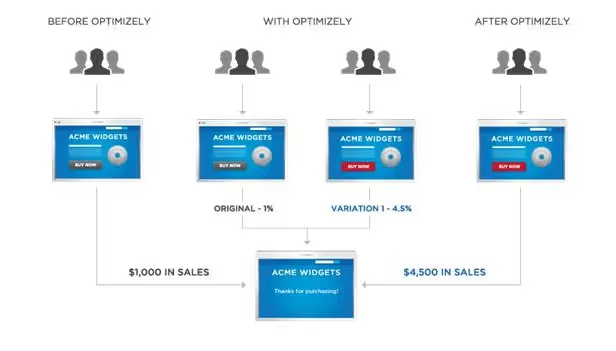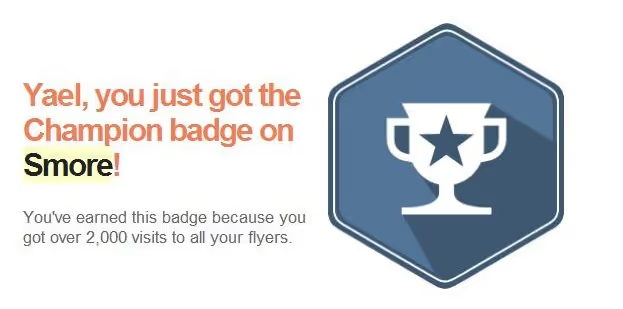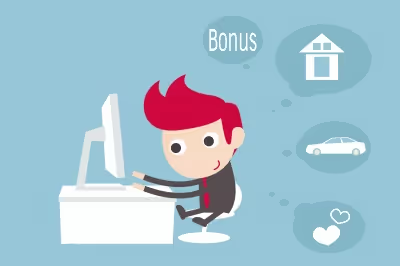5 Steps To Engage Your Users and Boost Your WOM
Congratulations! – you have traffic on your website and people started using your product!
That’s not a simple thing to accomplish, right? I know, I also work in a startup. As the marketing manager of Roojoom, a relatively young startup, I know exactly how hard it is to get users on board.
But it is all worth it: not only do you have people using your product, but these people could, on the right terms, become your advocates and spread the word about your product.
Word of mouth has always been a powerful tool; in fact, according to lithium, WOM influences 50% of the purchase decision. While you can’t predict the effectiveness of WOM, there is in fact quite a lot to be done to encourage people to talk about your product.
Here are some interesting WOM statistics for you to look into: WOM Stats & Numbers
This post will walk you through:
– How to create the best experience for your user
– How to engage your users in real time when they are on your website
– How to create a community to encourage people to talk about your product
– How to Create an incentive program to encourage people to share your product
User Experience
Give them a great experience and they will go tell their friends about you.
Sounds basic, but it’s actually not. Especially with a new product, guessing what users will like and what they won’t is hard.
Luckily for you, you don’t need to guess. You can use tools such as Optimizely and Visual Optimizer to A/B test almost everything.

You can also run user feedback groups where you gather a bunch of people that are not yet familiar with your product and watch how they navigate inside it (but be careful not to guide them thorough— let them figure it out on their own!).
Another way to find out what people do on your website is to add a recording tool, such as ClickTale, Crazy Egg or Mouse Flow (the last one also has a free version for startups).
However, onsite user experience is not the only factor that determines how happy your user is with your company. One thing that startups tend to overlook in early stages is the customer service.
A reach out from your user for any reason—question, piece of feedback, or even a complaint—is a terrific opportunity for engagement. Don’t just answer their question and send them their way – take the time to learn about their needs, ask for their opinion, and share your road map with them.
You would not believe how valuable people feel when they get a peek to your startup’s backstage, or how important they feel when asked to provide their own insights. Twenty minutes on the phone or even a face to face meeting (you can use google hangout!) and they will remember you forever. This increases the chances for some good WOM marketing by the dozen.
On + Offsite Communication
So engaging with users one by one is a great way to increase their loyalty. But since you can’t personally connect with each and every one of them over the phone, use communication tools to reach out to more people.
Start with offsite communication tools such MixPanel (which will also help you gain valuable information about your users and analyze your funnels – see this great post by our CPO on why we chose to use Mix Panel for Roojoom) to send your customers welcome emails and different personalized email messages following their activity.
To interact with your users while working with your product in real time, add a chat service such as Olark or AliveChat (I personally prefer the second), both offer free starting out programs for 1 or 2 users.
Another great tool is Intercom – it lets you add a personalized welcome message to your website any time a user comes in. Very useful to make sure all your users notice you have rolled out a new feature! And you can filter your users by segments so that everyone sees only the messages relevant for them.
Last but not least, meetups and webinars are great ways to interact with large groups of users (or potential users) at once. It also helps you become more influential in your industry.
Meet-ups are great if your audience happens to be local, but if you are a SaaS company most chances your users are spread all over the world.
This is what webinars were invented for. A webinar is simply a one-to-many virtual call that you can do with the help of many available tools. Google Hangout, for example, is free and easy to use, but not effective for a large group of people.
Here are some of the other tools I’ve been looking into: 5 Top webinar Tools
Community Forum
The days of web-forums on your website are long gone, but users still need a place to interact with each other, share ideas, and ask questions. Instead of just using the ‘post and pray’ model many companies approach content. You should be promoting the content where your audience hangs out, like social media.
If you’re thinking, “that’s easy— I can open a group right now!” you’re right. But wait– opening a group on Facebook or Linkedin is easy, but maintaining them takes a real commitment. Before making that commitment, ask yourself these questions:
1) Where are my users usually spending their time? Your group has a much higher chance of catching on if you open the group in the network your users are already on.
2) Time: Do I have enough time to manage the group? If there is not enough group interaction it won’t work. In order to create that interaction you need a dedicated moderator to spice things up and make sure all questions are answered in a timely manner.
3) Diversity: Do you have enough content to share there? And I’m not only talking about your content, such as announcing new features. I am talking about content relevant for your users but not directly related to your product.
Incentives
Last but not least are incentives. People like to be acknowledged for their efforts. It can be a virtual incentive, like a badge or a flag, and even a simple “You’re awesome” email might do the trick.
Smore does a great job gamifying their users’ experience. Each time you reach a certain milestone of page views they send an email with a badge to acknowledge your accomplishment, here is a fun example from an email I got from Smore this morning:

The important thing is that you don’t take their efforts for granted. Whenever I hear from a new user that someone recommended Roojoom to her, I ask who recommended and make sure to contact that person and thank him personally. When someone helped us score a big client, we even send a thank you basket to his office to show our gratitude!
When you reach a certain volume of users, you might not be able to personally thank everyone. But there are still ways for you to keep a personal touch, by implementing a referral program. In that way, you will be able to know exactly who recommended you – even if you didn’t have the time to reach out and ask, and not only you can thank them – you can also share some of your revenue with them as a token of gratitude.
Take Aways:
1) Your first users have the potential to become your best marketing people. Make sure they get a far better user experience then they expected and they will be happy to spread the word out.
2) Use on and off site tools to connect with your customers. If possible, create a place for them to network with each other online and be sure to be there for them for any question or feedback.
3) As you grow bigger and gain more users, implement automated ways to track, thank and reward users for recommending you.
Image courtesy of: bplanet / freedigitalphotos.net
 Post was written by Yael Kochman, Marketing Manager at Roojoom – The marketing platform for guided browsing that lets you connect pieces of content into a story. You can reach out to her @yaelkochman.
Post was written by Yael Kochman, Marketing Manager at Roojoom – The marketing platform for guided browsing that lets you connect pieces of content into a story. You can reach out to her @yaelkochman.
